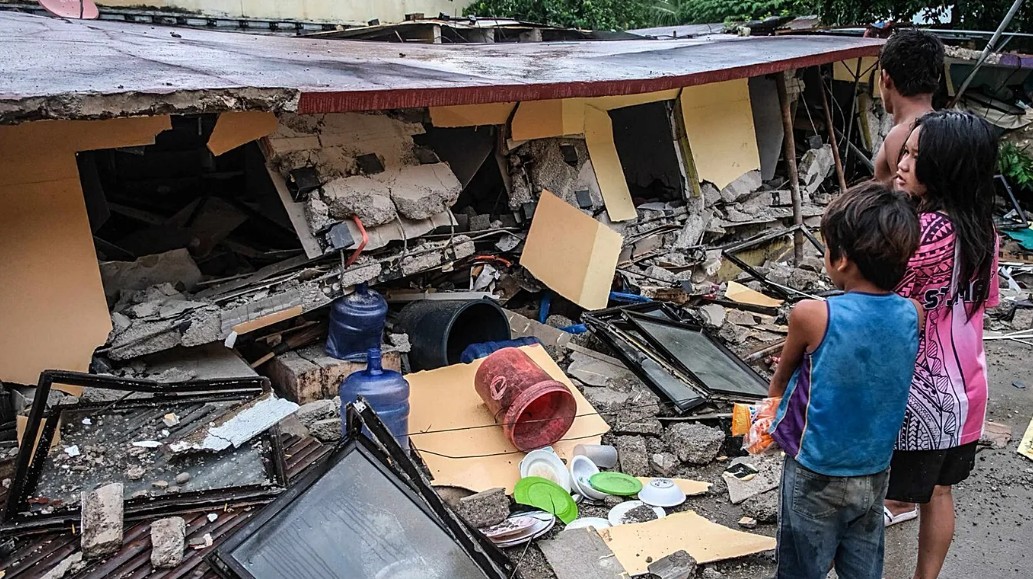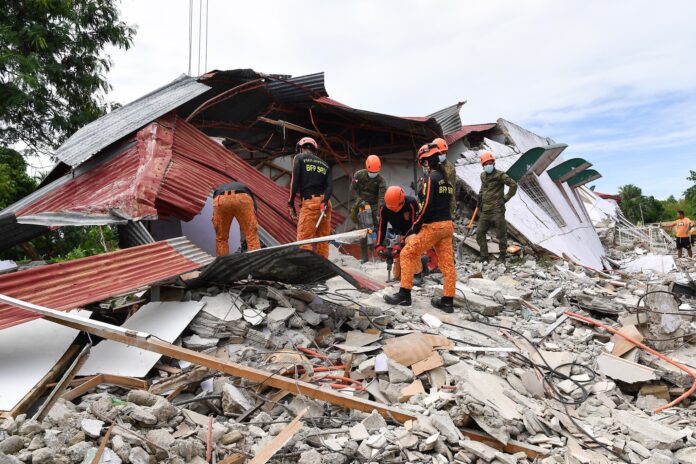Tragedy Hits Central Philippines
A devastating 6.9-magnitude earthquake shook the central Philippines late Tuesday night, killing at least 69 people and leaving hundreds more injured. The powerful tremor, which struck offshore near Bogo City in Cebu province at 9:59 p.m. local time, caused widespread destruction and has been described as one of the deadliest earthquakes to hit the country in more than a decade.
According to government officials, the death toll is expected to rise as rescue operations continue and teams search through collapsed buildings and landslide-hit areas.
Epicenter and Affected Areas

The epicenter of the quake was recorded about 12 miles northeast of Bogo City, a coastal hub home to nearly 90,000 residents. The shallow depth of the quake, just five kilometers below the surface, significantly intensified the damage.
Civil Defense Deputy Administrator Bernardo Rafaelito Alejandro IV reported that Bogo City alone recorded 30 deaths, while neighboring towns also suffered heavy losses:
-
San Remigio – 22 fatalities
-
Medellin – 10 fatalities
-
Tabogon – 5 fatalities
-
Sogod & Tabuelan – 1 each
Many survivors are now displaced, with homes and businesses reduced to rubble. Authorities warn that ongoing aftershocks could further endanger already weakened structures.
Hospitals Struggle Amid Rising Injuries
Hospitals in Cebu province and nearby municipalities have been overwhelmed with injured patients. In Bogo City, medical facilities reached maximum capacity within hours of the quake. The Philippine Coast Guard has since deployed emergency vessels carrying doctors, nurses, and medical supplies from Manila to assist with the crisis.
Images from the Cebu Provincial Hospital show patients being treated under makeshift tents as hospital staff moved them outdoors for safety. Among the injured are children, elderly residents, and workers caught in collapsing structures.
Sports Complex Collapse Adds to Casualties
:max_bytes(150000):strip_icc():focal(943x690:945x692)/earthquake-Philippines-100125-02-e8865871d20344388556738345829c51.jpg)
In San Remigio, a local sports complex crumbled during a basketball game, killing at least 13 people, including three members of the Philippine Coast Guard and one firefighter. Dozens more were injured in the incident, which has been described as one of the most heartbreaking tragedies of the night.
The Philippine Red Cross confirmed that its paramedics have treated at least 60 people across three provinces, and emergency shelters have been established for displaced families.
Search and Rescue Efforts Underway
Rescue operations remain ongoing across Cebu province, with teams utilizing backhoes, sniffer dogs, and specialized equipment to locate survivors trapped beneath the debris. Landslides triggered by the quake have cut off several mountain villages, complicating access for first responders.
“We are still in the critical phase of our search and rescue operations,” Alejandro stated during a press briefing. “There are reports of individuals trapped under rubble and landslides, and we are doing everything we can to save them.”
Relief efforts have been hampered by intermittent rain and damaged infrastructure. At least 11 bridges are currently impassable, and key roadways remain blocked by fallen debris and landslides.
Government Response and International Condolences
President Ferdinand Marcos Jr. has ordered the full mobilization of national resources to aid affected communities. Several cabinet ministers have been dispatched to Cebu to oversee ground operations.
“We are working around the clock to assess the damage and respond to the urgent needs of our people,” Marcos said in an official statement. He is expected to personally visit the disaster-hit areas on Thursday.
Meanwhile, world leaders have expressed their condolences. Messages of support have poured in from the United States, Japan, Australia, and the European Union, with some offering humanitarian aid should the Philippines request international assistance.
A Nation in Mourning
As communities across Cebu and neighboring provinces struggle to recover, survivors are left to mourn their loved ones while bracing for continued aftershocks. Emergency teams continue to prioritize search and rescue efforts, but with hospitals stretched beyond their limits and vital infrastructure heavily damaged, officials warn that the recovery process will be long and difficult.
For many Filipinos, the earthquake serves as a stark reminder of the country’s vulnerability to natural disasters. The Philippines lies on the Pacific “Ring of Fire”, a seismic zone known for frequent earthquakes and volcanic eruptions.
Outlook
Authorities have urged residents to remain vigilant, avoid unstable structures, and cooperate with ongoing rescue operations. Relief agencies, including the Philippine Red Cross, continue to call for donations of food, water, and medical supplies to support displaced families.
With nearly 70 lives lost and hundreds injured, the Philippines faces a monumental challenge in the aftermath of this disaster. The coming days will determine the extent of the tragedy as rescuers race against time to save survivors and provide relief to devastated communities.

